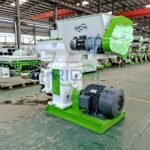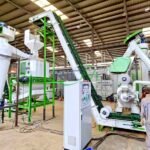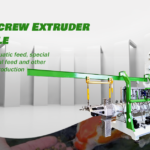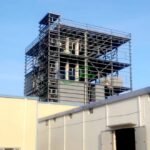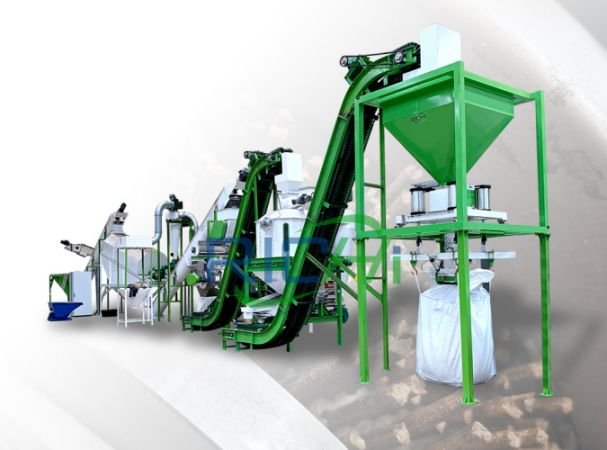Biomass rice husk pellet machines are essential for converting rice husks into high-density pellets, which serve as a renewable energy source and animal feed. To ensure optimal performance and longevity of these machines, it is crucial to regularly inspect their components for potential issues. This article outlines common problems to check for in the key components of a biomass rice husk pellet machine and offers tips for effective maintenance.
1. Pellet Die
The pellet die is one of the most critical components of a rice husk pellet machine, as it shapes the raw material into pellets.
- Common Issues: Over time, the die can experience wear and tear, leading to enlarged holes, cracks, or uneven surfaces. These issues can result in poor pellet quality, increased energy consumption, and reduced output.
- Inspection Tips: Check the die for signs of wear after every production cycle. Look for any visible damage, and measure the diameter of the holes to ensure they have not enlarged beyond acceptable limits.
- Maintenance Advice: Regularly clean the die to remove any residue and prevent clogging. If significant wear is detected, consider replacing the die to maintain optimal performance.
2. Rollers
Rollers work in conjunction with the die to compress the rice husk material into pellets.
- Common Issues: Rollers can become worn or damaged over time, leading to uneven compression and slippage. This can result in inconsistent pellet quality and reduced production rates.
- Inspection Tips: Inspect the rollers weekly for signs of wear, such as uneven surfaces or cracks. Pay attention to any unusual noises during operation, which may indicate roller issues.
- Maintenance Advice: Ensure that the rollers are properly aligned and adjusted to maintain consistent pressure against the die. Replace rollers when they show significant wear or damage to prevent further issues.
3. Bearings
Bearings support the rotating components of the rice husk pellet machine, such as the roller and die shafts.
- Common Issues: Bearings can wear out due to excessive heat, contamination, or lack of lubrication, leading to increased friction and potential failure.
- Inspection Tips: Inspect bearings monthly for signs of wear, such as unusual noises, vibrations, or overheating. Check for signs of grease leakage or signs of contamination.
- Maintenance Advice: Regularly lubricate the bearings according to the manufacturer’s recommendations. Replace any bearings that show signs of excessive wear or damage to prevent machine failure.
4. Gearbox
The gearbox is responsible for transmitting power from the motor to the pellet mill, ensuring that the appropriate speed and torque are applied during the pelleting process.
- Common Issues: Gearboxes can develop issues such as oil leaks, unusual noises, or excessive vibrations, which may indicate wear or damage to the gears or bearings.
- Inspection Tips: Inspect the gearbox monthly for signs of wear or damage. Listen for unusual noises during operation and check for oil leaks.
- Maintenance Advice: Change the lubricant in the gearbox according to the manufacturer’s recommendations. Ensure that the gearbox is properly aligned to prevent excessive wear.
5. Lubrication System
The lubrication system is essential for providing adequate lubrication to various moving components of the rice husk pellet machine.
- Common Issues: Insufficient lubrication can lead to excessive wear, overheating, and potential damage to machine components.
- Inspection Tips: Inspect the lubrication system weekly for leaks, blockages, or insufficient lubrication levels.
- Maintenance Advice: Regularly check and refill lubricants as needed. Use high-quality lubricants recommended by the manufacturer to ensure optimal performance.
6. Feed Hopper
The feed hopper is where raw materials, such as rice husks, are loaded into the pellet machine.
- Common Issues: The hopper can develop issues such as blockages, cracks, or damage that can hinder the flow of material into the machine.
- Inspection Tips: Inspect the feed hopper daily for signs of wear or damage. Ensure that it is clean and free from debris that could obstruct material flow.
- Maintenance Advice: Keep the hopper clean and well-maintained to ensure a consistent supply of raw materials. Repair or replace any damaged components promptly. (Related post: rice straw pellet making machine)

7. Cooling System
After the pellets are formed, they need to be cooled to maintain their quality and prevent spoilage.
- Common Issues: A malfunctioning cooling system can lead to soft or deformed pellets, which may affect their storage and transportation.
- Inspection Tips: Inspect the cooling system weekly for blockages, leaks, or signs of inadequate cooling, such as soft or deformed pellets.
- Maintenance Advice: Ensure that the cooling system is functioning properly and that air circulation is adequate. Clean the cooling components regularly to prevent buildup that could impede performance.
8. Electrical Components
Electrical components, including the motor, control panel, and wiring, are critical for the operation of the pellet machine.
- Common Issues: Electrical components can develop issues such as frayed wires, loose connections, or overheating, which can lead to machine malfunctions.
- Inspection Tips: Inspect electrical components monthly for signs of wear or damage. Look for frayed wires, loose connections, or signs of overheating.
- Maintenance Advice: Ensure that all electrical connections are secure and free from corrosion. Replace any damaged wiring or components promptly to prevent electrical failures.
9. General Maintenance Practices
In addition to inspecting specific components, implementing general maintenance practices can enhance the overall performance and longevity of your biomass rice husk pellet machine.
- Establish a Maintenance Schedule: Create a routine maintenance schedule that includes inspections, lubrication, and part replacements based on the manufacturer’s recommendations.
- Keep Records: Maintain detailed records of inspections, maintenance activities, and any issues encountered. This documentation can help identify trends and inform future maintenance decisions.
- Train Operators: Ensure that operators are trained on proper machine operation and maintenance procedures. They should be able to identify potential issues and perform basic maintenance tasks.
Conclusion
Regular inspection of the key components of a biomass rice husk pellet machine is essential for ensuring optimal performance, consistent pellet quality, and minimizing downtime. By focusing on the pellet die, rollers, bearings, gearbox, lubrication system, feed hopper, cooling system, electrical components, and implementing general maintenance practices, you can help extend the lifespan of your machine and improve its efficiency.Investing time and resources in regular inspections and maintenance will pay off in the long run by reducing operational costs, improving product quality, and enhancing the overall reliability of your rice husk pellet production process. As the demand for renewable energy sources continues to grow, maintaining a well-functioning biomass pellet machine will be crucial for success in this competitive industry.


